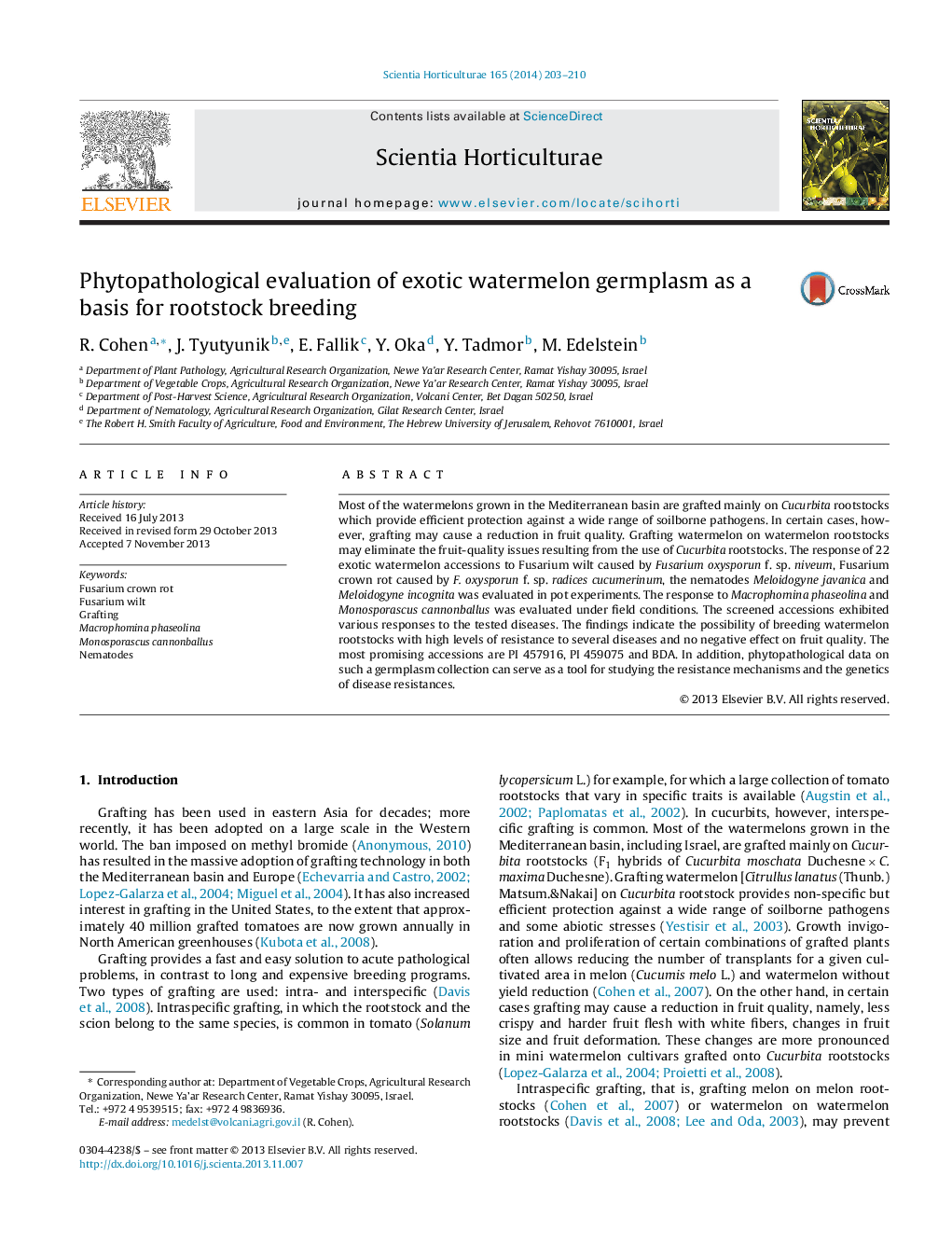| کد مقاله | کد نشریه | سال انتشار | مقاله انگلیسی | نسخه تمام متن |
|---|---|---|---|---|
| 6407427 | 1628833 | 2014 | 8 صفحه PDF | دانلود رایگان |
- Watermelons are less susceptible to nematodes than melon, cucumber and squash.
- Resistance to Macrophomina phaseolina was found in the tested germplasm.
- All the accessions were susceptible to Monosporascus cannonballus.
Most of the watermelons grown in the Mediterranean basin are grafted mainly on Cucurbita rootstocks which provide efficient protection against a wide range of soilborne pathogens. In certain cases, however, grafting may cause a reduction in fruit quality. Grafting watermelon on watermelon rootstocks may eliminate the fruit-quality issues resulting from the use of Cucurbita rootstocks. The response of 22 exotic watermelon accessions to Fusarium wilt caused by Fusarium oxysporun f. sp. niveum, Fusarium crown rot caused by F. oxysporun f. sp. radices cucumerinum, the nematodes Meloidogyne javanica and Meloidogyne incognita was evaluated in pot experiments. The response to Macrophomina phaseolina and Monosporascus cannonballus was evaluated under field conditions. The screened accessions exhibited various responses to the tested diseases. The findings indicate the possibility of breeding watermelon rootstocks with high levels of resistance to several diseases and no negative effect on fruit quality. The most promising accessions are PI 457916, PI 459075 and BDA. In addition, phytopathological data on such a germplasm collection can serve as a tool for studying the resistance mechanisms and the genetics of disease resistances.
Journal: Scientia Horticulturae - Volume 165, 22 January 2014, Pages 203-210
